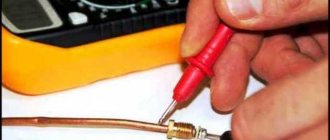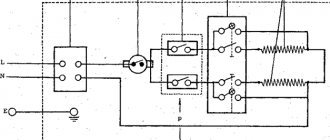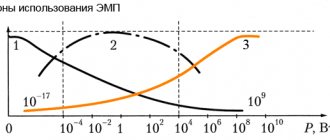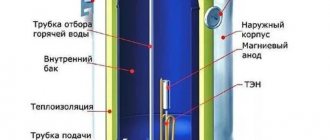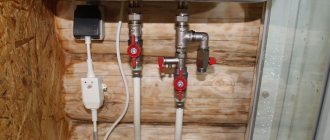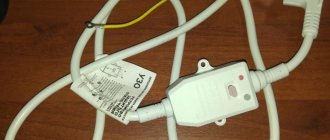One of the key parts in the “washing machine” is the heating element - a tubular electric heater (sometimes mistakenly called a heating element). It is the heater that heats the water during the washing process. If it fails, the machine cannot cope with the wash efficiently. The problem is solved by replacing the faulty heating element for washing machines with a new one.
The article is relevant for washing machines: AEG / AEG, Alliance / Alliance, Ardo / Ardo, Beko / Beko / Veko, Brandt / Brandt, Blackmann / Blackman, Bosch Classixx, Logixx, Maxx / Bosch Classics, Logix, Max / Maxx; Candy Holiday / Kandy Holiday, Daewoo DWD / Daewoo, Danube / Danube, Electrolux EWS / Electrolux, Electrosoba / Elektrosoba, General Electric / General Electric, Haier / Haier / Haier, Hotpoint Ariston ARSD, ARSL, Margherita / Hotpoint Ariston ARSD, ARSL, Margarita, Indesit WITL / Indesit, Kaiser / Kaiser, LG / LG / LV, Miele / Mile, Samsung Diamond EcoBubble / Samsung Diamond, Eco Bubble, German Siemens / Siemens, Zanussi / Zanussi, Whirlpool / Whirlpool, Atlant, Vyazma and others.
Main causes of breakdowns
Most often, a water heater breaks down for the following reasons:
- Scale. Poor quality of tap water leads to the fact that all mineral impurities are deposited on the heater. The scale prevents the transfer of heat, the element begins to overheat and eventually burns out (or the thermal relay trips).
- You use hand washing powder in an automatic machine. Because of this, a thick soap coating appears on the surface, which, like scale, interferes with normal heat transfer.
- Voltage fluctuations. Unstable power supply can lead to damage to expensive washing machine parts.
- Manufacturing defects. New cars with illiquid spare parts are rarely found, but it is impossible to predict that there will be none at all.
How to find, remove and change heating element with your own hands
Depending on the manufacturer and model of the machine, the heating element may be located on the side, front or back. You can determine the location by the size of the back cover of the machine. If it is small, most likely the heating element is located at the front, and in order to pull it out you will have to remove the entire front panel. In top-loading machines, to access the water heater, you must remove the side of the housing.
De-energize the equipment
First of all, unplug the washing machine to avoid getting an electric shock while working. If the washing machine needs to be moved, especially if the heating element is located in the rear, disconnect the equipment from the water supply. Then drain the remaining water using a special drain filter.
How to extract
If the part you need is on the back, just remove the back panel to get started. If it’s in front, you’ll have to work:
- Remove the top cover - unscrew the screws that secure it.
- Remove the detergent tray. Then unscrew the two screws and move the latch.
- Remove the rubber seal from the laundry hatch. It is held in place by a metal clip on a screw or spring. The screw fastening must be unscrewed, the spring fastening must be pryed with a screwdriver and pulled away from you.
- Remove the front panel by unscrewing the screws from the bottom or front.
- Disconnect the wires from the door lock (UBL).
After all these steps, access to the heating element opens and you can begin to replace it.
Universal instructions for disassembling washing machines: 23 videos for all brands
How to install, insert and assemble
The process of installing a new heating element is quite simple:
- Disconnect the power terminals, ground and wires from the temperature sensor. Take a photo of the wire connection diagram in advance so that there are no difficulties with reconnection.
- Unscrew the nut that secures the heating element. A socket or open-end wrench is best. The nut must be unscrewed almost to the end, and then the bolt must be pressed inward. This will allow you to completely remove the spare part.
- Remove the part completely.
- Check it for damage (how to, see below).
- Before installing a new element, clean the area where it is located from accumulated dirt (just like that or with a cleaning agent).
- Install the new spare part into the seat, connect the temperature sensor, connect the wires and tighten the nut. Reassemble the machine body.
Device Models
LG
In machines from this manufacturer, the heater is often located at the back. The contacts come out, but most of the spiral is hidden inside the housing. It’s difficult to get confused - the device of this brand has a direct-drive motor, which is attached to the tank, and the heating element is under the tank. The case does not require extensive disassembly.
Advice
The power of the new heater must correspond to the previous one. LG brand machines have power ranging from 1900 to 2000 W.
Indesit
Here the heater will be located at the back. Close the inlet valve before work, disconnect communications. The rear wall of the Indesit machines has a small hatch. Prepare a shaped screwdriver or an asterisk. The heating element is secured inside with a special bracket: make sure that the part fits directly into the bracket.
Samsung
The heating element is located on the flange (together with the fuse). While the heaters of other machines can be repaired, this is not possible in Samsung machines - you will need to buy a new one. Price - in the range of 700–1500 rubles.
Checking functionality
To make sure that the water heater is working properly or, conversely, requires replacement, it needs to be checked for faults. There are several ways to do this.
Inspection during washing
Signs of malfunction:
- The water does not heat up during washing.
- The water is heating up, but very slowly. The washing program takes longer than expected.
- Washing does not work properly. An error code appears on the display or indicators light up indicating a heater malfunction (which ones are indicated in the instructions).
- When touched, the machine receives an electric shock.
Also check how the electricity meter works when washing is started at a temperature of 60 degrees or higher. If it spins faster than usual, the heating element is working and turned on to heat the water.
Inspection of the removed heating element
- If there are black dots on the metal surface of the element, it means that the shell is broken. The spots may be hidden behind a layer of scale - you may have to clean the heater to remove the scale and look for damage.
- If there are no black spots, but there are jams, cracks and other damage, the water heater must be replaced.
Is there a breakdown
There is a dielectric inside the element tubes. If the element is broken, the current goes to the body of the washing machine and “shocks” you when you touch it.
You can check the breakdown using a multimeter. Set the sensor to megaohm mode. Connect one end to the terminal on the heating element, and the other to the body of the washing machine or the ground terminal. If the device produces any resistance value, the device is drawing current to the shell and must be replaced.
We count the resistance
Normally, the element resistance is 20–40 Ohms, some powerful models have up to 60 Ohms. First, let's derive the calculated resistance, which we will compare with the readings of the multimeter.
We calculate the calculated resistance using the formula R= U²/P, where U² is the voltage in the electrical network, P is the power of the water heater.
Let's say the power is 1800 Watts, the standard network voltage is 220 V. Therefore, R = 220²/1800 = 26.8 Ohms. If the heating element is working properly, the multimeter should show this value.
Calling
To ring the heater or measure its resistance, you need to perform the following steps:
- Disconnect the element from the power supply.
- Disconnect all wires connected to the heater.
- On the multimeter, select the resistance mode in Ohms.
- Connect the tester to the water heater terminals.
If the heating element is working properly, the device will display a value close to the one calculated above. If one or zero lights up on the device, the part must be replaced.
Signs of a heating element malfunction
A specialist can calculate almost any malfunction even without diagnostics; a heating element malfunction is most often accompanied by the following symptoms:
- The machine does not heat the water - to check, just touch the hatch through which the laundry is loaded. washing in this case becomes impossible, programs can be performed in the standard mode; in modern models, information about the heating error is displayed on the display;
- The machine is knocked out immediately after starting or after 8-12 minutes. after turning on the heating - this often happens when the coil in the heater is short-circuited;
- the machine knocks out the RCD after switching on or during the process of heating water, this situation is typical for a short circuit of the heating element to the housing or electric current leakage to the housing due to poor insulation;
- continuous washing over a long period of time.
The listed signs are considered indirect; the technician has the right to change the heating element after checking the device with a multimeter. Replacing the heater does not take much time, the procedure takes no more than 30-40 minutes, less for professional technicians.
Theory
To wash, the machine must be connected to a water supply to draw water and a power supply to heat it. The program you have chosen for washing regulates the temperature to which the heating element will heat the water.
Operating principle
Externally, the heater looks like a tube. Inside it there is a special nichrome or fechral wire, which heats up when current is applied. All free internal space of the tube is filled with a dielectric, which transfers heat from the wire to the walls of the heater. To supply electricity to the nichrome thread, the tube is soldered to the contact pad on which the terminals are located.
When the machine is turned on, the wire inside the element begins to heat up, and the heat spreads through the dielectric to the external environment and begins to heat the water in which the element is located. When the desired temperature is reached, the built-in sensor-relay or central control module turns off the current supply.
Specifications
- Power is the main indicator on which the speed of water heating depends. Typically around 2.2 W. The resistance also depends on the power, the normal value of which is from 20 to 40 Ohms.
- Element shape and length: depend on the specific model. The part can be straight or curved.
- Temperature sensor. If the water heater is not equipped with a temperature sensor, it is only suitable for washing machines where the sensors are installed separately.
- Coating made of stainless steel, non-ferrous metals or ceramics (ceramic heating element).
Question answer
How long can a heating element work?
The average lifespan of a heater is two to ten years, but don't be surprised if it breaks sooner. A number of factors influence the service life and serviceability of the part:
- part brand;
- frequency of operation;
- washing modes used;
- quality of water and detergents.
If you constantly run the washing machine and the water contains a lot of mineral impurities, the performance of the element will be reduced.
How to choose the right model?
Pay attention to the seat of the heater, the presence or absence of a temperature sensor, shape, length and power. All heating elements, except for parts of old machines, have the same seats, but may differ slightly in length.
Despite this, it will not be possible to install a long water heater instead of a short one, just like installing a curved heater instead of a straight one.
Where to buy a heating element?
It is not always possible to find a suitable part in a regular store. The easiest way is to buy the necessary part in an online store or service center.
Preparatory stage
Buying a new heating element for a washing machine is not difficult; it is only important that it is intended specifically for this model. Despite the fact that they differ little in design, there may be some differences in size, spiral shape, etc. In addition, for repairs you will need a set of screwdrivers, tubular and wrenches, as well as sealant. It’s good if you have a tester or ohmmeter - it will be useful to make sure that the heating element is malfunctioning or working properly.
Important:
Before starting work, be sure to turn off the power to the washing machine, disconnect it from the water supply, and also drain the water using the drain filter.
Recommendations and tips
- When replacing the heater, it is very important to install it in the same place and secure it correctly. If the part is lower than its intended place, when it heats up, the tank may be damaged, which will lead to water leakage. Hang it higher - both the drum and the heating will be damaged. Also pay attention to the correct connection of the wires.
- To make your water heater last longer, use special water softeners. They will not get rid of scale at all, but they will reduce the likelihood of its occurrence.
- To prevent the spare part from overheating and burning due to scale, select the average washing temperature.
What will you need?
Required tools:
- Phillips and flat screwdrivers;
- lubricant;
- multimeter;
- 8mm socket and ratchet wrench.
It is recommended to buy an original heating element from the manufacturer, this way you will insure yourself against fakes and low-quality spare parts that quickly fail.
If the equipment is still under warranty, do not carry out repairs yourself; it is better to contact a service center, where, with a warranty card, they will replace it free of charge.
